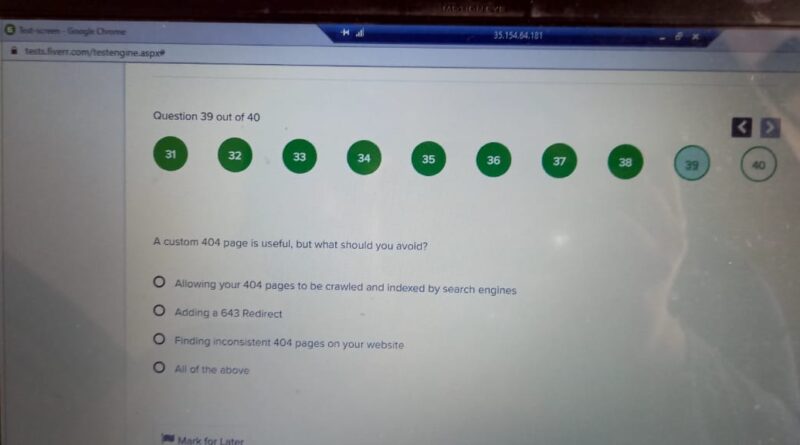A Custom your 404 pages to be crawled and indexed by search engines
You’ve probably heard the term “404 page” before. 404 pages are pages on your website that don’t have any content on them. They serve as a way for your website visitors to find information about what they’re looking for, but they typically rank poorly in search engine results. If you want to help improve your website’s SEO, you need to make sure your 404 pages are properly crawled and indexed. This can be done through a variety of methods, but the simplest way is to use a content management system (CMS) like WordPress or Drupal. Once you have a CMS installed, it’s easy to add a custom 404 page template that will help search engines index and crawl your site more effectively.
What is a 404 Error?
A 404 error is a message returned by a web server when it cannot find the requested document or file on its system. When you type in your address bar and nothing comes up, chances are you’ve received a 404 error. This usually happens when you’ve moved or deleted something on your computer without backing it up first.
If you experience frequent 404 errors, there are a few things you can do to try and resolve the issue. Sometimes simply reloading the page or navigating to another URL will solve the problem. If that doesn’t work, you can try performing a search for the terms that were missing from your page and see if any of those results bring up what you were looking for.
If none of these methods prove successful, it might be time to consider upgrading your hosting plan or contacting your web host to ask for assistance.
How to Fix a 404 Error
If your website is not appearing in search engine results, it may be due to a 404 error. A website with a 404 error isn’t being found by the search engines, which can be frustrating for visitors and damaging to your SEO efforts. There are several ways to fix a 404 error.
First, make sure you’re using the correct url for your website. If you’re using a custom domain name, make sure you have included the correct subdomain in your URL. You can also verify that you’re using the right html version of your site by visiting http://www.google.com/webhp?hl=en&ie=UTF-8&oe=UTF-8&aq=f&aqi=g1&aql=&gs_l=psy-ab.3 … &qid=UA-14828418-5
Next,check to see if there are any typos or errors in your url. Some common errors include incorrect protocol (http instead of https), missing slashes (/), and wrong hostname (www instead of localhost).
Finally, make sure all of your pages are properly indexed by Google and Bing. You can use the Google Search Console or Bing Webmaster Tools to check rankings and indexing status for each page on your website.
What to do if your Website is Crawling but not Indexed by Google
1. If you are seeing high levels of crawl activity but no indexing by Google, there are a few things you can do to improve your chances.
You can try optimizing your website for search engines using the tips below:
– Make sure your website is well written and easy to understand. Make use of keywords throughout the site, in the titles, in the text, and even in the images.
– Use effective anchor text linking across your website. When you link to other pages on your website, include relevant keywords in the anchor text so that Google can track which pages are being clicked on as a result.
– Keep your site updated with fresh content. New information will generally be more relevant to Google than older information. This means regularly publishing new blog posts, adding new or revised images, and migrating old content to a more modern format.
What to do if your Website is Indexed by Google but Not Crawling
If your website is indexed by Google but not crawling, there are a few things you can do to increase the chances of your website being crawled. One thing you can do is make sure that all of your website’s pages are included in Google’s index. You can also make sure that your website is properly formatted and written in HTML5. Finally, you can submit your website to search engine directories and other relevant search engines.
FAQ
A Custom your 404 pages to be crawled and indexed by search engines
Allowing your 404 pages to be crawled and indexed by search engines
Adding a 643 Redirect
Finding inconsistent 404 pages on your website
All of the above
Ans: Allowing your 404 pages to be crawled and indexed by search engines

